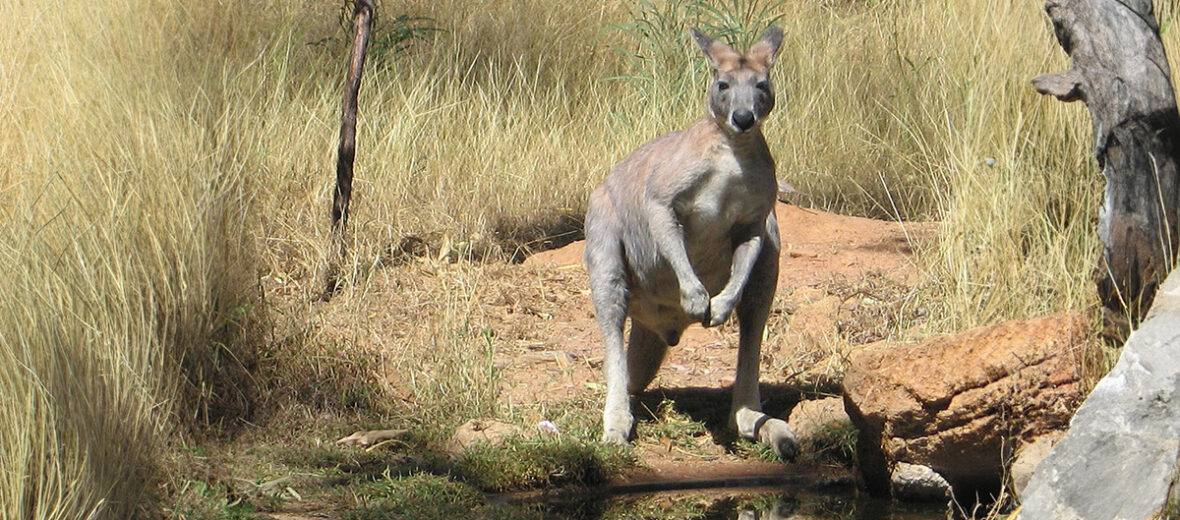
The antilopine kangaroo, aka antilopine wallaroo or antilopine wallaby, hails from northern Australia. They dwell mostly in savannah woodlands found in the wet/dry tropical regions, valleys, low-lying depressions, and on the floodplains of the larger rivers, mostly in wet areas with an abundance of shorter green grass. They face the threats of habitat loss at the hands of residential and commercial developments; mismanaged fire regimes; and hunting, but these critters are abundant and listed as Least Concern by the IUCN. However, their numbers are decreasing.
First the Stats…
Scientific name: Macropus antilopinus
Weight: Up to 108 lbs.
Length: Up to 6.23 feet, including their tail
Lifespan: Up to 19+ years
Now on to the Facts!
1.) These critters are social animals that dwell in groups of up to 30 individuals.
2.) A group of antilopine kangaroos is called a court, herd, or mob.
3.) Older males tend to become solitary as they age.
4.) Individuals in mobs spend their waking time grazing and grooming one another.
5.) They are mostly crepuscular (active at dawn and dusk) during the dry season. During the wet season, they tend to be more diurnal (active during the day).
But wait, there’s more on the antilopine kangaroo!
6.) A variety of shorter grasses, as well as some leaves, are the food of choice for these herbivores (eat plant matter).
7.) The males tend to groom one another before beginning combat. This behavior is rare among other kangaroo species.
Did you know…?
These kangaroos can jump upwards of 9 feet!
8.) Just before a fight breaks out, the males will produce a hissing sound and then thump their feet.
9.) These kangaroos can rotate their ears up to 180º to afford them with superb, multidirectional hearing.
10.) Like all kangaroos, they are incapable of walking backwards.
But wait, there’s still more on the antilopine kangaroo!
11.) Just like all kangaroos, they are polygynous (1 male mates with multiple females).
12.) Females undergo up to a 35 day gestation (pregnancy) that yields a single joey.
Did you know…?
Antilopine kangaroos can leap forward up to 25 feet and can hop at up to 44 mph, for short distances!
13.) After birth, the joey migrates to its mother’s marsupium (pouch) to continue developing for another 20 weeks.
14.) At 20 weeks, the joey begins to leave their mother’s pouch and explore.
15.) Full weaning is complete in up to 15 months.
16.) Saltwater crocodiles, dingoes, wedge-tailed eagles, and pythons all prey on these kangaroos.
Now a Short Antilopine Kangaroo Video!
This video talks about kangaroos in general.
Be sure to share & comment below! Also, check out the Critter Science YouTube channel. Videos added regularly!
Want to suggest a critter for me to write about? Let me know here.
Some source material acquired from: Wikipedia & IUCN
Photo credit: Greg Schechter



